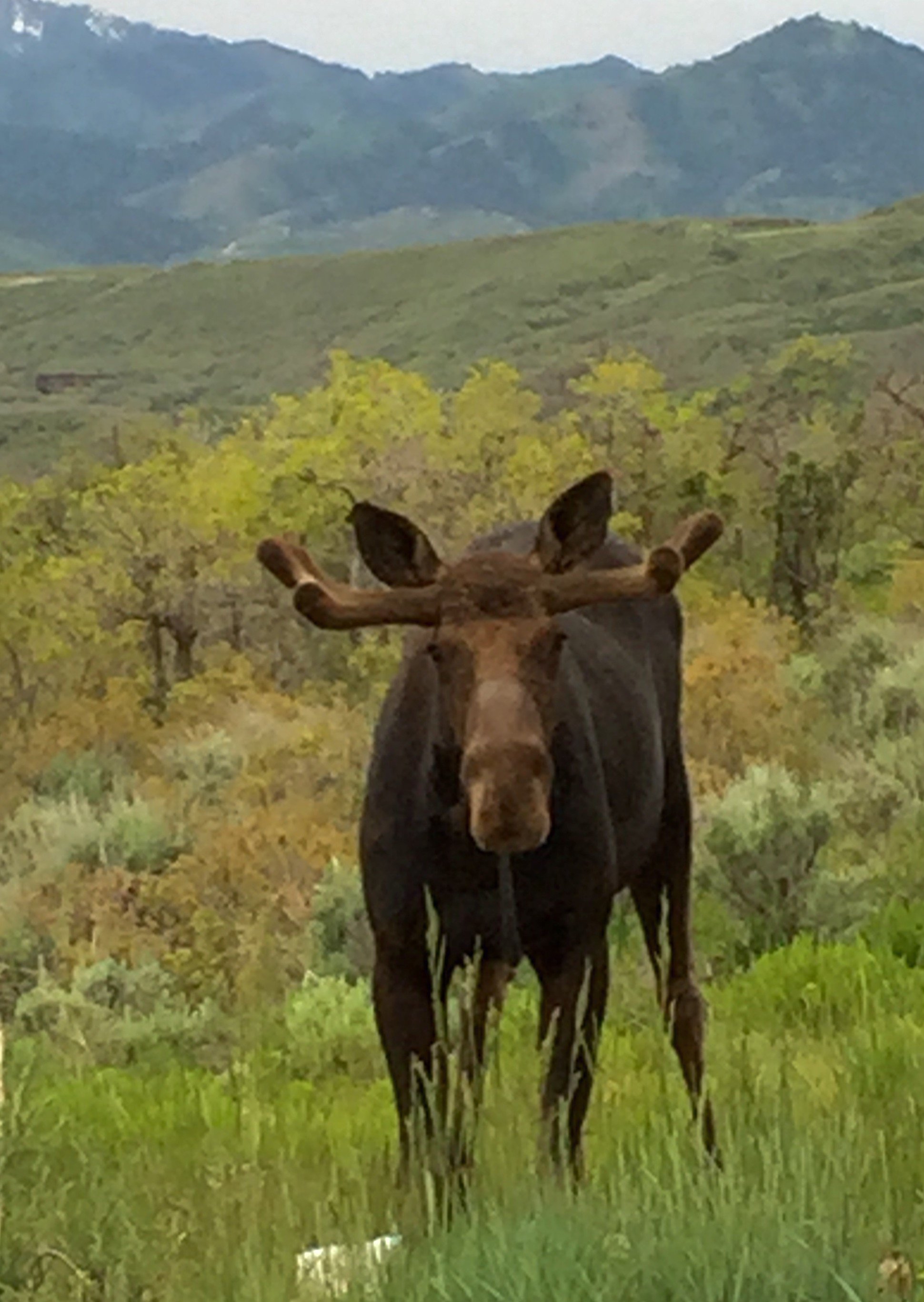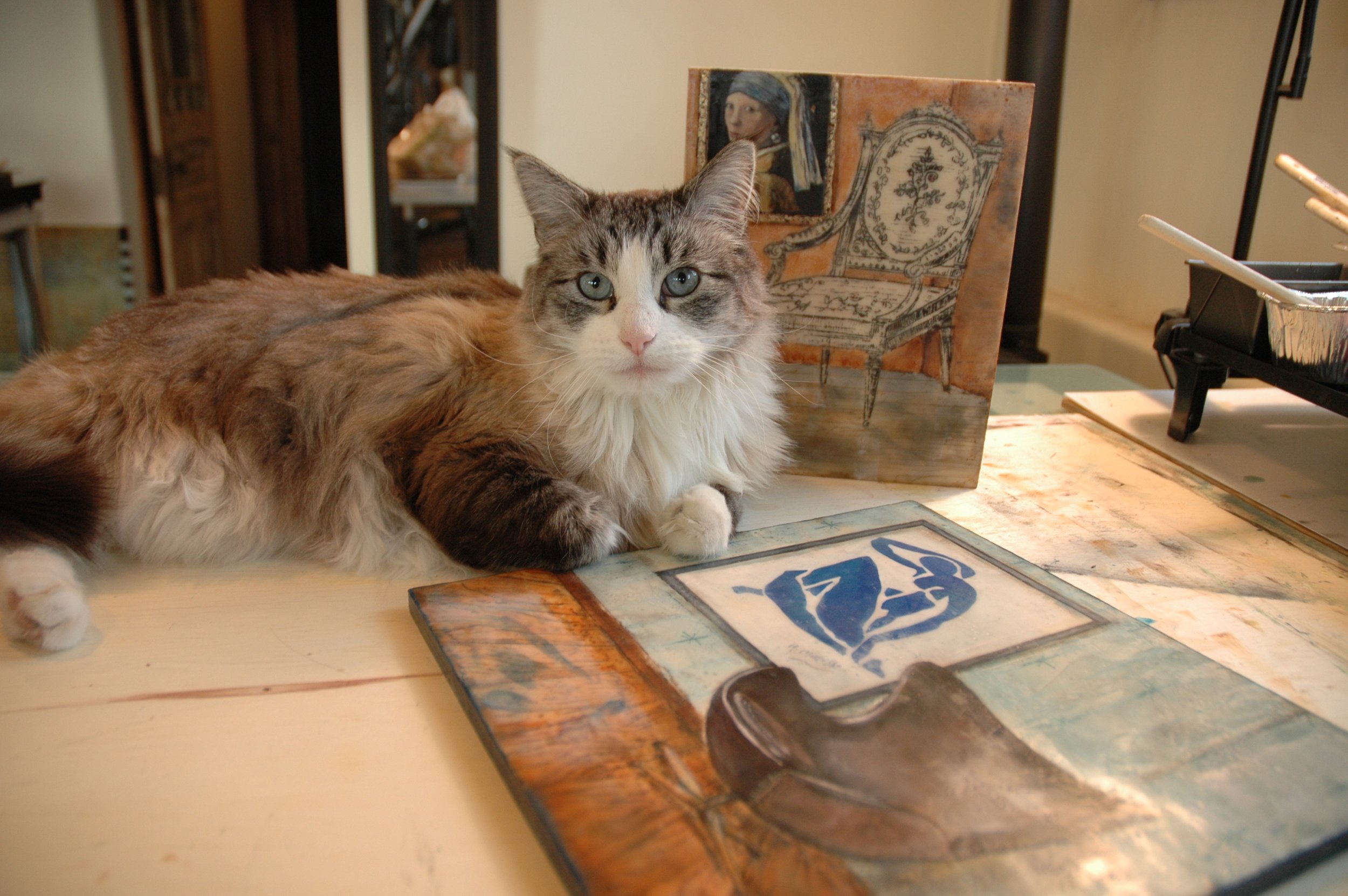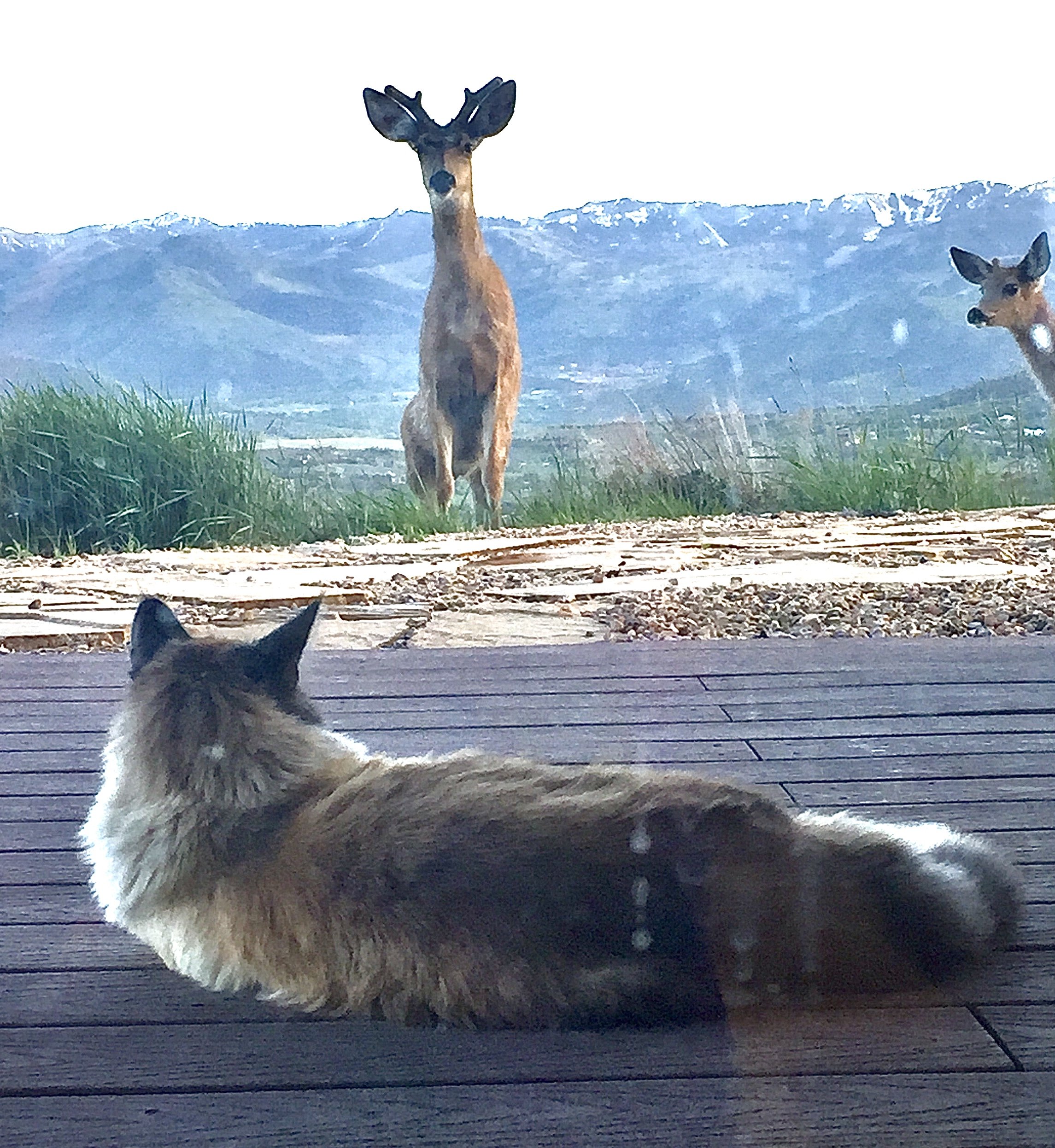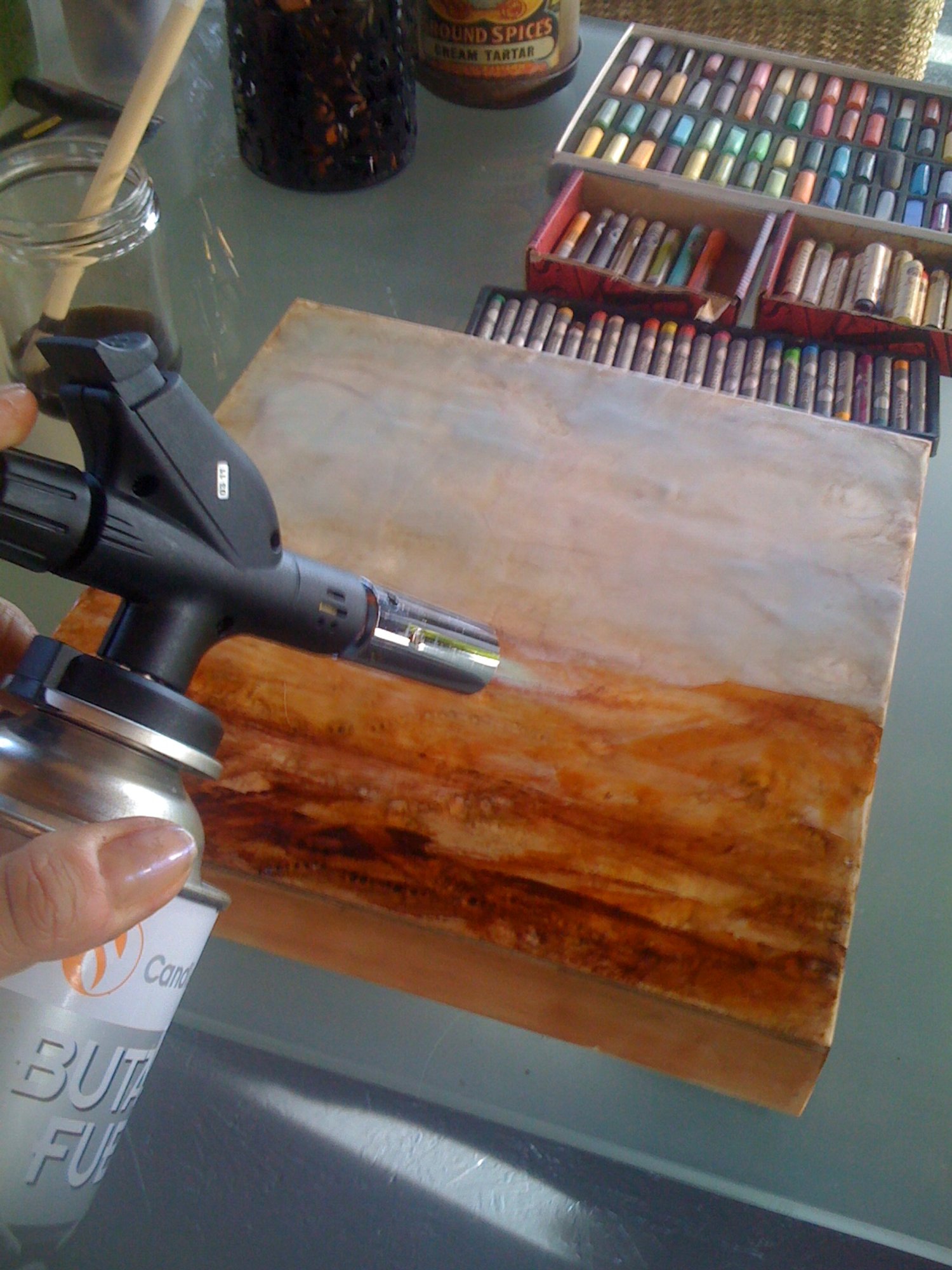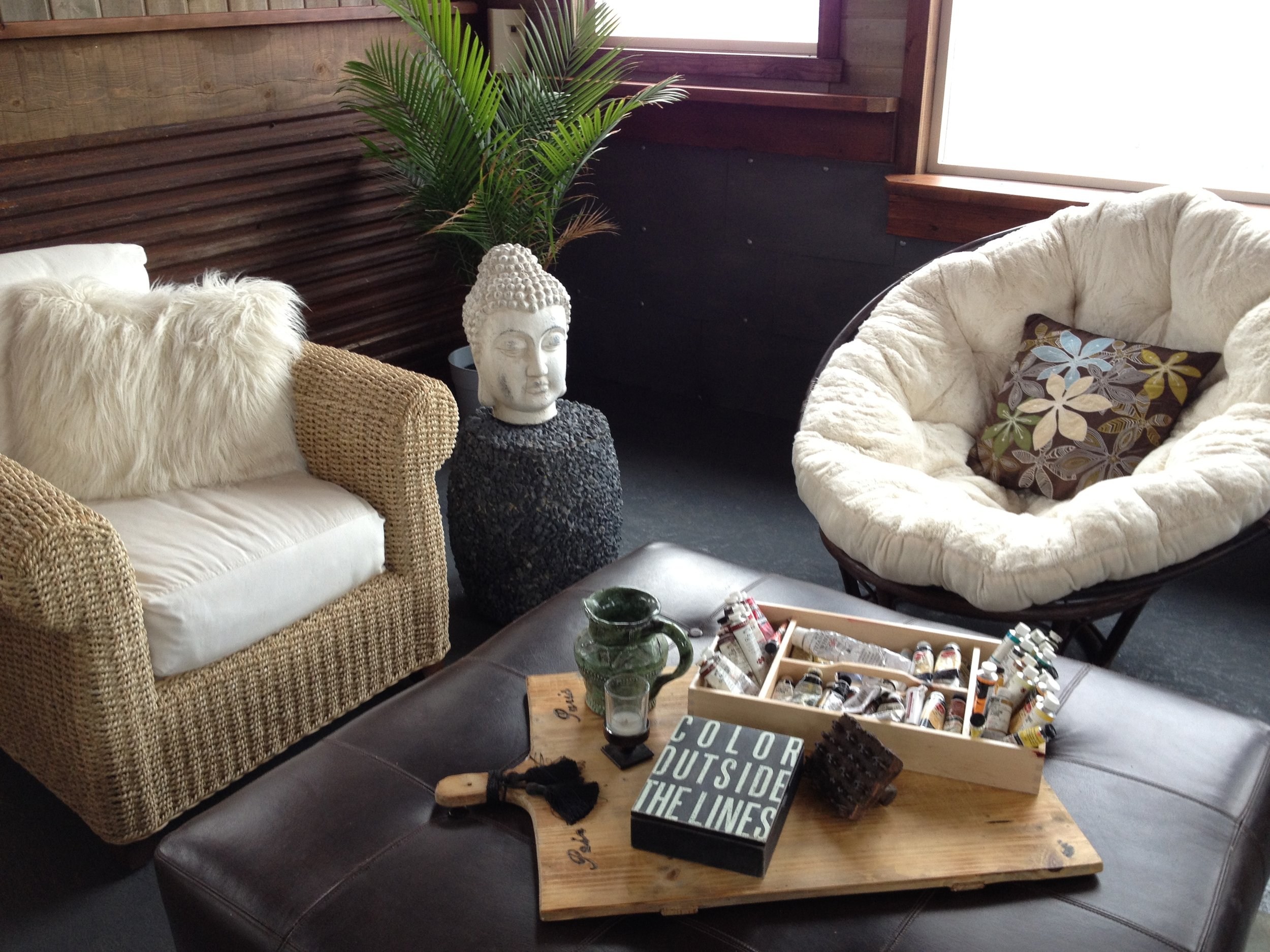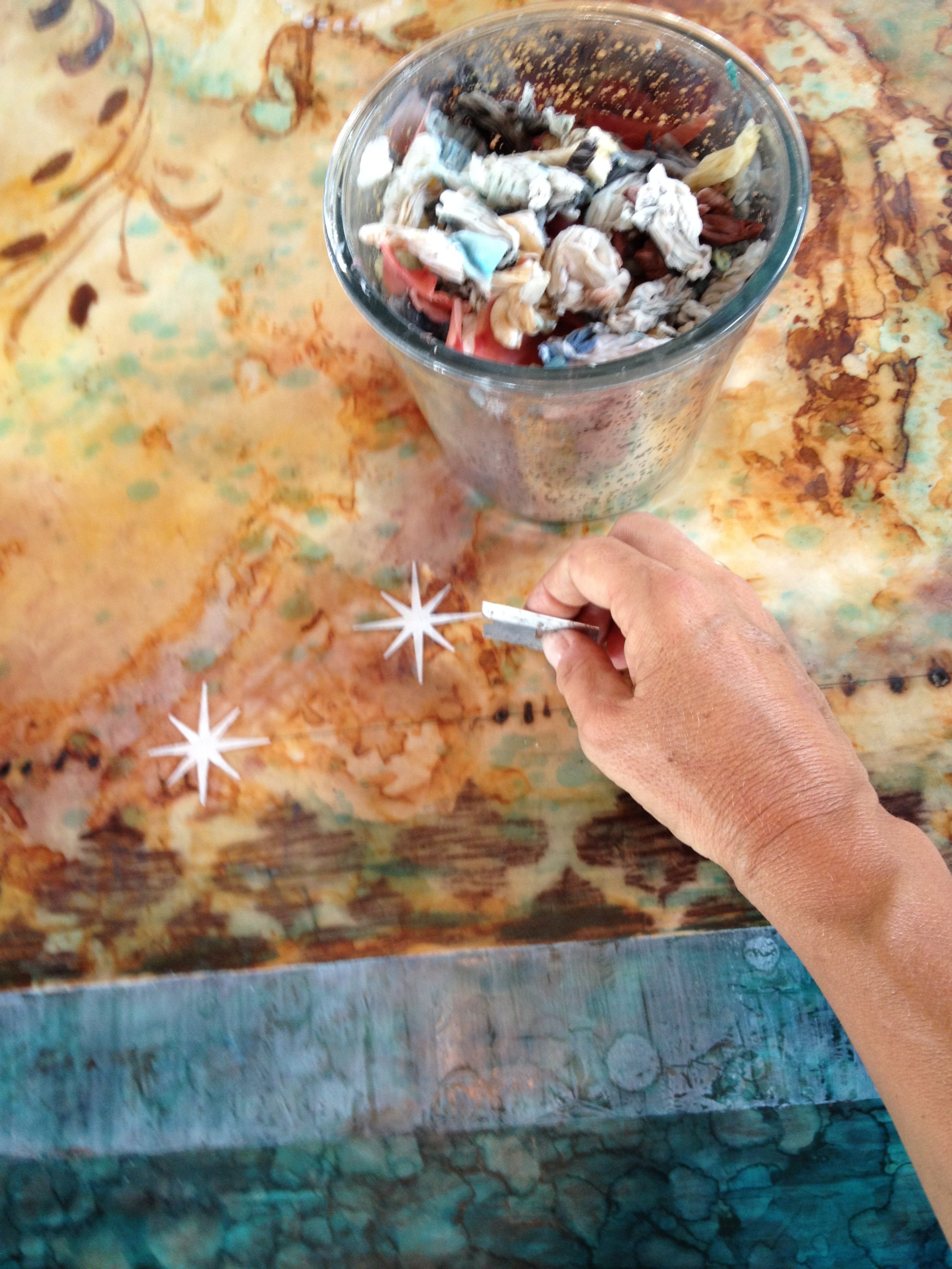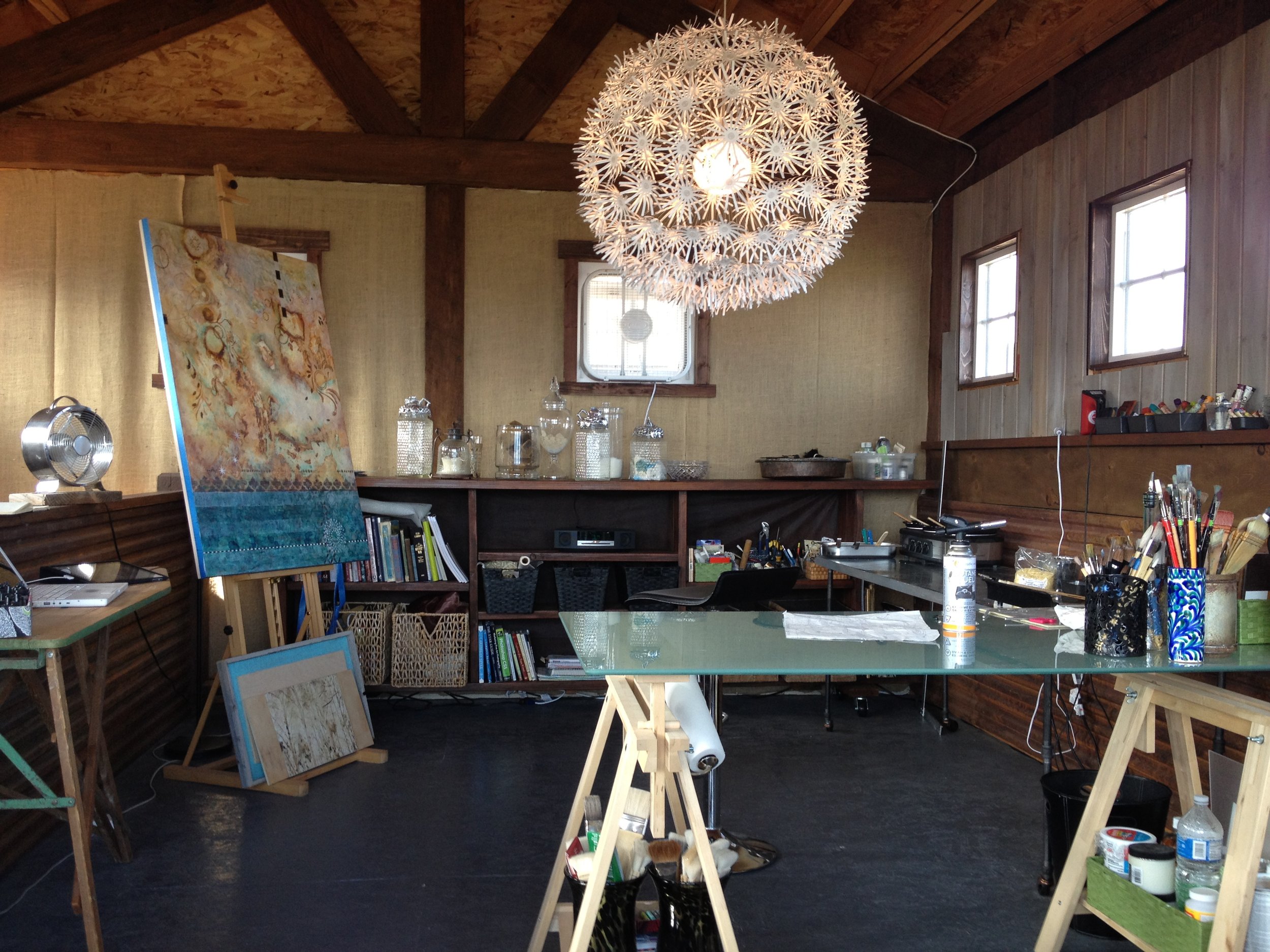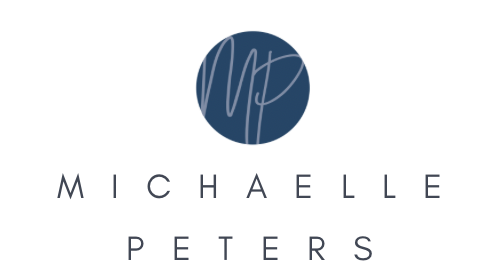ABOUT ENCAUSTIC…
-

HISTORY
Encaustic (Greek, meaning ‘to burn’) is a form of painting with molten beeswax. Originally used by the Greeks in boat building to seal wooden hulls, it evolved into decorative applications with pigment. The Romans used encaustic in mural applications but abandoned it due to intense labor requirements in favor of ‘fresco’, pigmented plaster.
The Egyptians embraced encaustic, notably in the Fayum Mummy Portraits of 100-300ad (pictured above) in which pigmented wax portrayed the face of the deceased. Today these portraits look as if they were painted yesterday, bright and intense, as wax is impervious to moisture and elements that age over time. The Byzantine era saw some use of encaustic but it was abandoned and lost entirely during the dark ages. It wasn’t rediscovered until the 20th century by artists such as Jasper Johns, Paul Klee and Wassily Kandinsky, and has gained wide popularity in the last decade.
Today it involves beeswax to which damar, a natural tree resin, is added for hardness and stability. The wax is quickly applied to an absorbent surface such as wood, paper, canvas or other material. Encaustic can also be used in sculpture and mixed media.
-

MY PROCESS
Working with electric griddles and metal containers of encaustic medium (beeswax and damar tree resin), I quickly apply the molten wax to birch wood panels with natural bristle ‘hake’ brushes. Wax can be clear or pigmented. I add 10-20 layers to a painting, each layer an opportunity to add dimension and interest with oil paint, dry pigment, ink or shellac. I can make marks, scrape away with carving tools, add collage materials or build texture. Each layer must be fused with a torch, iron or heat gun.
Rusted Silk is one of my favorite contributions. I make it with salt water, silk and a variety of steel scraps, then seal in a plastic bag to ‘marinate’ for a few days. Rust, or iron oxide, is the same pigment that creates the red rock surrounding us in the Southwest. The patterns and colors are reminiscent of water and erosion, sometimes like maps of land and sea.
The process is quite physical, like the ‘construction’ of a painting from the inside out. Light transcends through the layers unlike any other medium. It is unforgiving and unpredictable at times, but I find that to be the magic, and the reward. I use olive oil and rubbing alcohol for cleaning instead of toxic solvents. My studio smells like warm honey.
-

CARE & MAINTENANCE
Like any artwork of value, never hang in harsh direct sun. Otherwise, it is safe to hang in any environment as other types of fine art. Care must be taken in transporting in hot climates, be sure to protect from marring or scratching as you would with art that is not protected by glass. If the painting appears dull, polish occasionally with a dry soft cloth, such as microfiber, to renew the shine.
Recent commission, adjusting colors for the space and selecting the frame.
CUSTOM COMMISSIONS
As an artist and designer, I love working with collectors, designers and architects to create site-specific work. It’s a fun process that can involve a wide range of ways to personalize a painting. For collectors, this can involve adding photos, symbolism, or subject matter that is meaningful to you. We can customize colors and mood to enhance your space with a ‘Wow’ factor, or create serenity and peace. The possibilities are wide open to your input.
It’s easy to brainstorm ideas over emails and video chat. I travel frequently between Utah and California so regional site visits are also a breeze!

from my studio in Park city, utah
